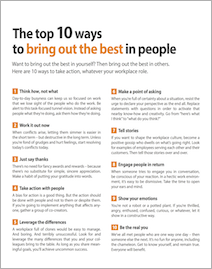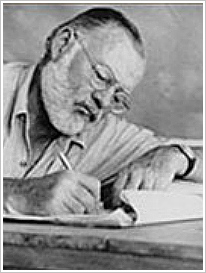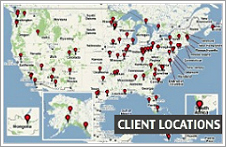You’ve come to the right place for buzzword-free info about work, workplaces, and workplace improvement. These posts are all about improving work processes, strengthening teamwork, sharpening management skills and leadership skills, improving communication, and more. This is info you can use right away, full of practical ideas in straight-talking plain English. Enjoy!
• Have a suggestion or question for a possible future post? Please let us know.
Keep an eye on a few key measures – or else

I should’ve known better. My work involves performance and process improvement, so I’m well aware that meaningful measures and objective data really do matter.
But for an upcoming half marathon, I decided to go rogue. I’d run without my watch and without looking at the posted times on the course. It would be a test of sorts for 13.1 miles. I’d remain oblivious to time and see what happened, instead of closely tracking time like I’d done in all my previous races.
On race day, the early miles seemed to fly by. I felt so good that at mile 4, I picked up the pace. At mile 9, still feeling strong, I sped up some more. And with a few miles to the finish, I raced forward with confidence.
When I crossed the finish line, I had no clue what time I had logged — but I knew it was good. Perhaps my best time ever.
Except that it wasn’t. Not even close. For all the half marathons I’ve run over the years, it was my worst time ever.
As I dug into the official post-race numbers, I discovered what had happened.
Those first four fly-by miles were easy because I wasn’t flying at all. According to the data, my pace had been 14 seconds slower than my leisurely per-mile pace for long training runs. For whatever reason, my internal pacing mechanism was giving me a good report, but it was way off. Without a watch, I had no accurate reality check.
When I dialed up my pace at about mile 4, I felt like I was really hitting the accelerator. But the data told a different story. From that point to mile 9, my pace was only 46 seconds faster per mile — a measly 7.5% pick-up. Without any objective feedback telling me otherwise, I was relying on my internal pace clock, and it was again giving me a deceptively rosy report.
In the last four miles, I shaved another 33 seconds off my per-mile pace. I passed 482 runners — while being passed by only 19. All that passing surely boosted my confidence, further convincing me that this race could be a personal best. But because I had so dogged it early on, the quicker pace was nowhere near enough to get me a good time.
Did I have fun during the race? Absolutely.
Would I have run a faster race if I had been wearing a watch and tracking my pace? Without a doubt.
A few time-based data points early on would have right-sized my confidence — and propelled me to a faster pace in those crucial first few miles. Additional checks later on would have pulled me harder to the finish line.
I’ll be back to wearing a watch for my next race. But this story is less about running and pacing — and more about numeric reality checks and their impact on performance, especially at work.
When you’re busy with anything that involves a process or performance or both, your intuition and instincts will give you feedback on how you’re doing. But don’t count on it being accurate. You don’t want to get all the way to the figurative finish line, full of inflated confidence, only to find out that you produced so-so results.
If the outcome really matters to you, or to the people you serve, be sure to have some form of external feedback to complement your internal feedback. Keep it simple. Two or three objective measures can serve as an effective reality check.
So get clear on what you’re tracking as you go about your work. The race will still be fulfilling — and you’ll be far better informed every step of the way.
Civility At Work: 20 Ways to Build a Kinder Workplace
People who get along at work get more done and have more fun – and who doesn’t want that, right?
So scan this list, share it with colleagues, and bring it to life.
1. Say what you mean, and mean what you say. There’s no substitute for authentic communication.
2. Be less inclined to give advice – and more inclined to seek it.
3. Resist the urge to jump to conclusions about people and their motives. Go to the source, get the facts, and then decide.
4. Identify the biggest redeeming quality of that person who’s always driving you crazy. Keep it in mind the next time the two of you interact.
5. When greeting a colleague, skip the mindless how-ya-doin’. Ask a question that shows genuine interest.
6. Go out of your way to say thank you. Sincere appreciation is powerful stuff – it’s feedback, recognition, and respect all wrapped in one.
7. If you’re overdue in showing gratitude, make up for lost time. Contact everyone who’s owed thanks, and let them know how much you appreciate their help.
8. When credit and compliments come your way, spread them to all who helped. If you think you’re solely responsible for that honored achievement, think again.
9. Promise only what you can deliver. If what you deliver falls short, explain why.
10. When things go wrong, resist the urge to assign blame. It’s the system that usually fails, so fix the system, not the people.
11. Widen your social circle. If you always go to lunch with the same group, invite someone new.
12. Give a gift for no reason. If you work with nature lovers, order some plants or flowers. If the group has a chronic sweet tooth, get a few candy dishes and keep them full.
13. When a rumor reaches your ear, let it go out the other.
14. Step down from the treadmill of daily tasks and have an inefficient chat with a colleague. If it’s someone you rarely engage in conversation, all the better.
15. Show interest in someone else’s interests. Okay, maybe you’re not dying to hear about Pat’s passion for stamp collecting, but Pat will be thrilled you asked.
16. When you take a stand and later realize it’s the wrong stand, be honest enough to say so.
17. Involve more people in weighing options and making decisions. There’s incredible brainpower all around you, so why not put it to work?
18. If you tend to send e-mails to colleagues who are an easy walk away, give the computer a rest. Get up, walk over, and have a no-tech conversation.
19. Try going a day without making judgments about people. Good luck – it’s tough!
20. Don’t wait for kindness to come your way. Gandhi had it right: We must be the change we wish to see in the world.
The top 10 ways to bring out the best in people
 |
Want to bring out the best in yourself? Then bring out the best in others. Here are 10 ways to take action, whatever your workplace role.
1. Think how, not what. Assignments and deadlines keep us focused on the work itself – sometimes so much that we lose sight of the people who do the work. Maintain a wider perspective. Instead of asking people what they’re doing, ask them how they’re doing.
2. Work it out now. When conflicts arise, letting them simmer is easier in the short term – but destructive in the long term. Unless you’re fond of grudges and hurt feelings, start resolving today’s conflicts today.
3. Just say thanks. There’s no need for fancy awards and rewards – because there’s no substitute for simple, sincere appreciation. Make a habit of putting your gratitude into words.
4. Take action inclusively. A bias for action is a good thing. But the action should be done with people and not to them or despite them. If you’re going to implement anything that affects anyone, gather a group of co-creators.
5. Turn up the differences. A workplace full of clones would be easy to manage. And boring. And terribly unsuccessful. Look for and leverage the many differences that you and your colleagues bring to the table. As long as you share meaningful goals, you’ll achieve uncommon success.
6. Make a point of asking. When you’re full of certainty about a situation, resist the urge to declare your perspective as the end all. Replace statements with questions in order to activate that nearby know-how and creativity. Go from “here’s what I think” to “what do you think?”
7. Tell stories. If you want to shape the workplace culture, become a positive gossip who dwells on what’s going right. Look for examples of employees serving each other and their customers. Then tell those stories over and over.
8. Engage people in return. When someone tries to engage you in conversation, be conscious of your reaction. In a hectic work environment, it’s easy to be dismissive. Take the time to open your ears and mind.
9. Show your emotions. You’re not a robot or a potted plant. If you’re thrilled, angry, enthused, confused, curious, or whatever, let it show in a constructive way.
10. Be the real you. We’ve all met people who are one way one day – then someone else the next. It’s no fun for anyone, including the chameleon. Get to know yourself, and remain true. Everyone will benefit.
![]() Download a 1-page handout of this article (PDF 64KB)
Download a 1-page handout of this article (PDF 64KB)
Are you crushing creativity with your nonverbals?

If a face can launch a thousand ships, can it also kill a thousand ideas?
My guess is yes.
Some time ago, my work path crossed with someone we’ll call Helen. She seemed plenty nice, but whenever she heard an idea that didn’t fit her way of thinking, she’d say so with her face.
Her lips would tighten. Her mouth would twist to one side. Her eyebrows would knit together. Sometimes her head would tilt.
Without any words, Helen seemed to be saying: Your idea stinks.
When she went on to speak, her words often matched her expression. She would begin with skepticism.
I can’t say that Helen sunk a thousand ideas – I wasn’t keeping count. But she sunk some of mine, and she kept other ideas from setting sail. I became so intent on avoiding her negative expression that I stopped coming forward with new ideas.
The whole experience got me thinking about the signals I might be sending. It reminded me to turn up my self-awareness.
Facial expressions are like pictures – they’re worth a thousand words. Let’s use them for good.
10 pain-free ways to boost your productivity
Ernest Hemingway didn’t have the typical job, but he said volumes about productivity when he observed, “Never mistake motion for action.”
How about you? Does it ever feel like you’re on a nonstop treadmill of busyness?
If so, here are ten ways to slow down and ensure that you’re taking meaningful action.
1. Do less in order to do more. Scour your schedule for tasks that amount to meaningless busywork. Stop these costly habits, and redirect your saved time to work that will add value.
2. Know when “good enough” is good enough. Some work activities don’t call for a perfectionist’s extra effort. Learn to spot those “okay is okay” tasks, and dial down your time accordingly.
3. Use a timer. If you want to spend 30 minutes on a given task, set a timer (on your phone or watch) and stop when it goes off. Keep pace by keeping an eye on the time as your work unfolds.
4. Schedule meetings for before 10 a.m. or after 3 p.m. By holding meetings early or later, you and other meeting-goers will preserve a bigger stretch of uninterrupted time during the workday.
5. Respond to e-mail and messages twice a day. It’s tempting to jump whenever something beeps. Turn off the notifications, and go from reactive to proactive by scheduling two quick blocks of time each day to respond.
6. Take a break. Ten minutes away from work can clear the mind, reduce stress, and put things in perspective. When you reboot your computer, it works better. Shouldn’t you reboot yourself?
7. Learn how to single-task. When we do multiple activities at the same time, our mental processors slow down. Start doing one thing well at a time.
8. Get a smart start. Make a habit of beginning your day by working on the day’s most important task. This will set a productivity precedent and give you good momentum.
9. Quarantine the phone. Does it even need to be said?! Turn off your phone, put it away, and focus on the work at hand.
10. Get more productive together. At your next meeting, ask others: “What can we do to be make better use of our time? What can we do as individuals, and what can we do as a team?” Write ideas on a flipchart or white board. At the next meeting, have people report progress, and ask for more ideas. Over time, productivity will become a higher priority, and more people will take positive action.
In case you’re wondering about Hemingway’s own productivity: He wrote ten novels, ten short-story collections, and five works of nonfiction over the course of about 30 years. He is widely recognized as one of America’s most respected authors, and every list of classic American literature includes at least one of his books. Among them: The Old Man and the Sea, A Farewell to Arms, The Sun Also Rises, and For Whom the Bell Tolls.




